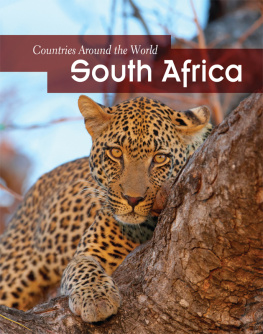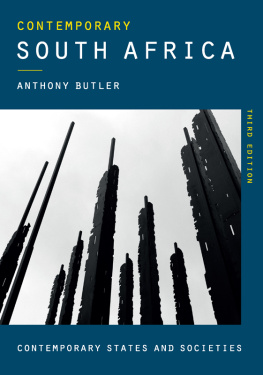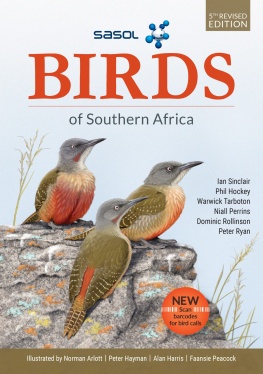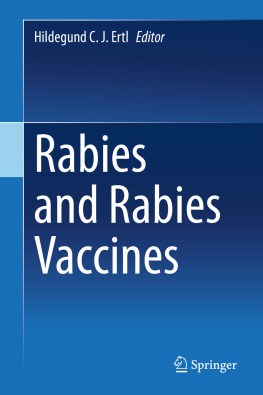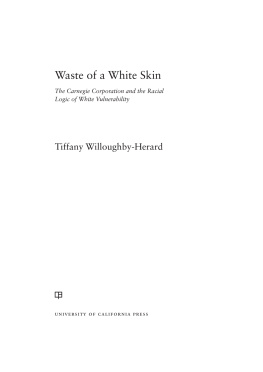
Mad Dogs and Meerkats
Ohio University Press Series in Ecology and History
James L. A. Webb, Jr., Series Editor
Conrad Totman
The Green Archipelago: Forestry in Preindustrial Japan
Timo Myllyntaus and Mikko Saikku, eds.
Encountering the Past in Nature: Essays in Environmental History
James L. A. Webb, Jr.
Tropical Pioneers: Human Agency and Ecological Change in the Highlands of Sri Lanka, 18001900
Stephen Dovers, Ruth Edgecombe, and Bill Guest, eds.
South Africas Environmental History: Cases and Comparisons
David M. Anderson
Eroding the Commons: The Politics of Ecology in Baringo, Kenya, 1890s1963
William Beinart and JoAnn McGregor, eds.
Social History and African Environments
Michael L. Lewis
Inventing Global Ecology: Tracking the Biodiversity Ideal in India, 19471997
Christopher A. Conte
Highland Sanctuary: Environmental History in Tanzanias Usambara Mountains
Kate B. Showers
Imperial Gullies: Soil Erosion and Conservation in Lesotho
Franz-Josef Brggemeier, Mark Cioc, and Thomas Zeller, eds.
How Green Were the Nazis? Nature, Environment, and Nation in the Third Reich
Peter Thorsheim
Inventing Pollution: Coal, Smoke, and Culture in Britain since 1800
Joseph Morgan Hodge
Triumph of the Expert: Agrarian Doctrines of Development and the Legacies of British Colonialism
Diana K. Davis
Resurrecting the Granary of Rome: Environmental History and French Colonial Expansion in North Africa
Thaddeus Sunseri
Wielding the Ax: State Forestry and Social Conflict in Tanzania, 18202000
Mark Cioc
The Game of Conservation: International Treaties to Protect the Worlds Migratory Animals
Karen Brown and Daniel Gilfoyle, eds.
Healing the Herds: Disease, Livestock Economies, and the Globalization of Veterinary Medicine
Marco Armiero and Marcus Hall, eds.
Nature and History in Modern Italy
Karen Brown
Mad Dogs and Meerkats: A History of Resurgent Rabies in Southern Africa
Mad Dogs and Meerkats
A History of Resurgent Rabies in
Southern Africa
Karen Brown
OHIO UNIVERSITY PRESS
ATHENS
Ohio University Press, Athens, Ohio 45701
www.ohioswallow.com
2011 by Ohio University Press
All rights reserved
To obtain permission to quote, reprint, or otherwise reproduce or distribute material from Ohio University Press publications, please contact our rights and permissions department at (740) 593-1154 or (740) 593-4536 (fax).
Printed in the United States of America
Ohio University Press books are printed on acid-free paper

18 17 16 15 14 13 12 11 5 4 3 2 1
Library of Congress Cataloging-in-Publication Data
Brown, Karen, 1964 author.
Mad dogs and meerkats : a history of resurgent rabies in southern Africa / Karen Brown.
p.; cm. (Ohio University Press series in ecology and history)
Includes bibliographical references and index.
Summary: In Mad Dogs and Meerkats, Karen Brown links the increase of rabies in Southern Africa to the HIV/AIDS epidemic. Her study shows that the most afflicted regions of South Africa have seen a dangerous rise in feral dog populations as people lack the education, means, or will to care for their pets or take them to inoculation centers. Ineffective disease control, which in part depends on management policies in neighboring states, has exacerbated the problem. The book traces the history of rabies in South Africa and neighboring states from 1800 to the present and shows how environmental and economic changes brought about by European colonialism and global trade have had long-term effectsProvided by publisher.
ISBN 978-0-8214-1953-3 (hardcover : alk. paper) ISBN 978-0-8214-4367-5 (electronic) 1. RabiesAfrica, SouthernHistory19th century. 2. RabiesAfrica, Southern History20th century. 3. RabiesAfrica, SouthernHistory21st century. 4. RabiesAfrica, SouthernEpidemiology. I. Title. II. Series: Ohio University Press series in ecology and history.
[DNLM: 1. RabieshistoryAfrica, Southern. 2. CanidaeAfrica, Southern. 3. Disease OutbreakshistoryAfrica, Southern. 4. Disease VectorsAfrica, Southern. 5. Herpestidae Africa, Southern. 6. History, 19th CenturyAfrica, Southern. 7. History, 20th CenturyAfrica, Southern. 8. History, 21st CenturyAfrica, Southern. 9. RabiesepidemiologyAfrica, Southern. WC 550]
RA644.R3B76 2011
362.196'953dc22
2010053683
Contents
Chronology
Some Key Events in the History of Rabies in Southern Africa
Acknowledgments
Researching and writing this book on rabies during the last four years have proved to be interesting and exciting, and I am grateful for the help and support of the people who have enabled me to bring this project to fruition. The project has come a long way since I came across an article that inspired me to look at the history of rabies in South Africa. While working on another veterinary history project, I encountered a paper by Joset Fourie titled Destruction of Meercats by Means of Exhaust Gases from a Car Engine, published in the Journal of the South African Veterinary Medical Association in 1940. The title struck me as both interesting and oddI was unaware that meerkats transmitted rabies, and killing them with gasoline fumes seemed extraordinary. I consequently copied the article and thought it was worthy of future investigationand indeed it was.
In writing this book, I would first like to thank those who have directly assisted my research by granting me access to archival material and agreeing to talk to me about human and animal rabies. I appreciate the help of a number of scientists in South Africa who patiently answered what for me were questions about complex etiological and epidemiological issues. In particular, I thank Claude Sabeta, Robert Swanepoel, Louis Nel, Wanda Markotter, and Janusz Paweska. Thanks too go to Kevin le Roux, Peter Geertsma, and John Godlonton for sharing their firsthand experiences of dealing with rabies. Rudolph Bigalke and Anthonie Snijders have been great sources of information on infectious diseases more generally. I am also most grateful to David Swanepoel for granting me access to the archives and library at Onderstepoort, and to Julie Parle for permitting me to see uncatalogued public health papers for the apartheid period. Katie Hampson generously sent me copies of scientific articles relating to rabies. Hannes Pienaar and Grietjie de Klerk kindly provided me with recent epidemiological data on rabies outbreaks.
For their assistance in locating valuable books and documents, I want to thank the staffs of the South African national and provincial archives in Pretoria, Cape Town, Pietermaritzburg, and Bloemfontein; the Botswana State Archives in Gaborone; the Institute for Contemporary History in Bloemfontein; the Spencer Lister Memorial Library in Johannesburg; and the Rhodes House and the Radcliffe Science Library in Oxford.
Here in Oxford, I have appreciated the curiosity and interest of my friends and colleagues who seemed happy to listen to me talk about rabid mongooses and kudus, and were willing to read and comment on some of the chapters in this book. Special thanks go to Sloan Mahone for instigating the social reading group and to William Beinart for his political and environmental insights. I am grateful to Mark Harrison for giving me the opportunity to carry out this project at the Wellcome Unit for the History of Medicine in Oxford, and to the Wellcome Trust for financing this research. The historians Neil Pemberton, Michael Worboys, and Sandra Swart have also provided me with useful advice and ideas.


